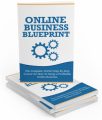 License Type: Master Resell Rights
License Type: Master Resell Rights  File Size: 2,270 KB
File Size: 2,270 KB File Type: ZIP
File Type: ZIP
 SKU: 51136
SKU: 51136  Shipping: Online Download
Shipping: Online Download
Ebook Sample Content Preview:
Chapter 7: Build A Portfolio
Synopsis
As you break the excess spending habit, and fall under the savings habit, you're ready to take on the next step: building investments, retirement savings and real property equity. Sound unachievable?
Investments
Some steps to think about:
Meet with a financial consultant or certified financial planner to view this all important part of your budgeting.
Acquire a solid plan and stick with it. All too frequently we've become complacent when the market is doing well and cowardly when the market isn't doing so well. What sets the successful individuals apart is containing those emotions.
How come it matters: development—personally as well as financially. You've got to go from a spendthrift to budgeter, a budgeter to a saver, and a saver to an investor.
Ascertain what items or issues you're saving for. These may be retirement, a new house, your youngster's education or anything else you choose.
Ascertain when you want to retire, buy a house or send your youngsters to college, to help you decide what percentage return you need to earn on your initial investment.
Determine how much money to invest. Invest what you are able to comfortably afford now, keeping in mind that you are able to change that amount later.
Ascertain how much risk you're willing to take. Many investments bring forth high returns and are riskier than others.
When you decide the amount you're willing to invest, the returns you want to accomplish, when you need the money and how much risk you're willing to bear, assemble your investment portfolio.
An investment counselor or stockbroker is a great source of advice. Tell these advisers your objectives and ask them to propose how to allocate your income.
Reassess your portfolio at least yearly. Study each investment.
Chapter 8: Ways To Save Money At Home
Synopsis
There are lots of ways to save at home.
Change Some Things
Save income on electrical energy.
Put in the new type of fluorescent bulbs in lights you leave on for long periods. They provide 4 times as much light and last 10 times longer than incandescent bulbs. Likely Savings: $10-$50/yr.
Lower the temperature on your water heater to between 110 and 120 degrees. It's not essential to have it any hotter and wastes energy. Likely Savings: $20-40/yr.
Discover if your utility company offers free energy audits, where they audit your home for energy effectiveness and advocate inexpensive ways to cut energy costs, like insulating the water heater, weatherstripping, and so forth. Just insulating your water heater may save you $25 a year. Likely Savings: $50/yr.
Set thermostats no greater than 68 degrees in winter and no lower than 78 degrees in summertime. Turn your heat down even more at night or when you're not home (unless you've a heat pump, which operates more efficiently at one uniform setting). Each extra degree in wintertime may increase heating costs by 3%. In summertime, each degree may raise cooling costs by 6%. Likely Savings: $325 to $500/yr.
Cut down on the use of your dryer. Not only is it a huge energy drain, it may also suck heated air out of your home very quickly in wintertime. Hang clothes on a clothes rack to dry out and use the dryer for towels and other heavy items. Likely Savings: $25-50/yr.
Utilize your microwave rather than your oven if possible and save up to 50% in energy costs for cooking. Likely Savings: $50/yr.
Always do full loads of wash. A typical full load utilizes about 21 gals of water. A little load uses 14 gals. Several small loads utilize substantially more water than one or two big loads. Over the course of a year, this adds up. Likely Savings: $25-$125/yr.
Run your dish washer only when you've a full load. Let the dishes air-dry rather than utilizing the heat cycle. An average dishwasher costs $60 to $100 annually to run. Likely Savings: $35-55/yr.
Mend running toilets or leaking faucets quickly. An endlessly running toilet may utilize more than 8,000 gallons of water a year. Likely Savings: $25-125/yr.
Put in flow restricting shower heads. A family of 4 may save 8,000 to 12,000 gals of water a year. You not only save on the cost of the water, but likewise the cost of heating it. Likely Savings: $100-$300/yr.
Add fabric softener to your laundry at the suitable point in the cycle rather than adding it at the end and running a different rinse cycle, which may use up to ten extra gals of water. Figure out how much time it takes your washing machine to reach the rinse cycle, and set a timer so you are able to add softener at the right time. Likely Savings: $25-100/yr.
Utilize warm or cold water for washing apparel, and always rinse in cold water. Likely Savings: $50/yr.
Save money on other.
Use basic phone service. Extra services like call waiting and call forwarding may nearly double your costs for the phone. Likely Savings: $168/yr.
If you are able to live without cable, you are able to save between $300 and $600 annually. If you can't live without it, acquire basic service only. You are able to rent a lot of movies for the extra $150 to $600 annually you pay for movie channels like HBO, Showtime, etc. Likely Savings: $144-700/yr.
Plant perennial flowers rather than annuals. You receive a one time cost and enjoy the flowers for a long time, with little additional effort or income. Annuals, on the other hand, call for an outlay of cash and effort yearly. Likely Savings: $100-$300/yr.
- File Size:2,270 KB
- License: Master Resell Rights
- Category:Ebooks
- Tags:2014 Ebooks Master Resale Rights








